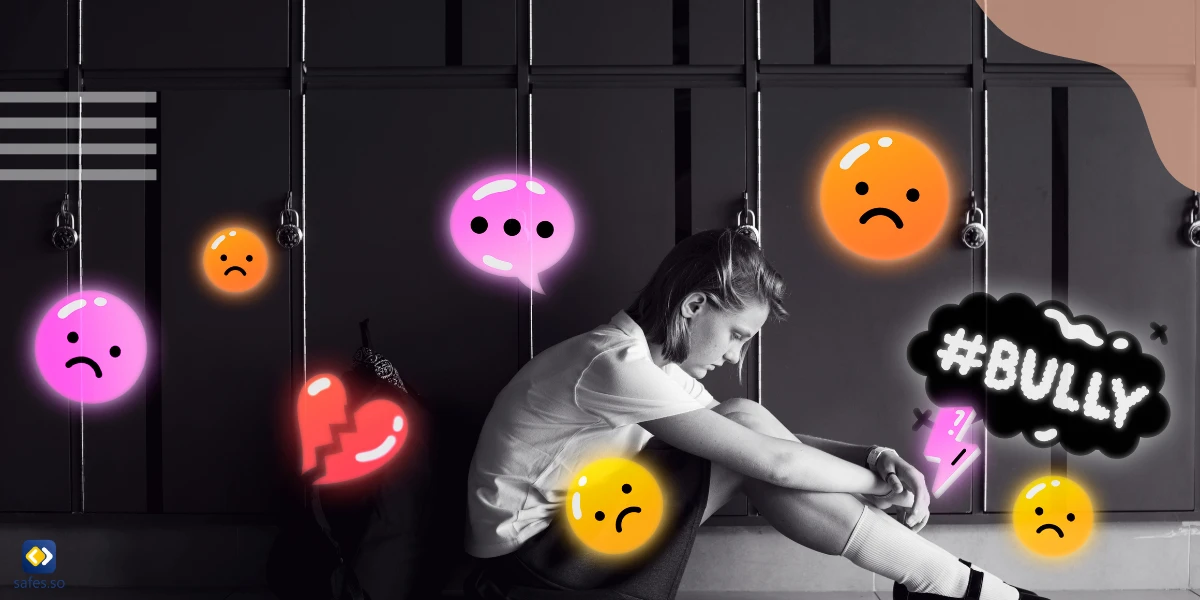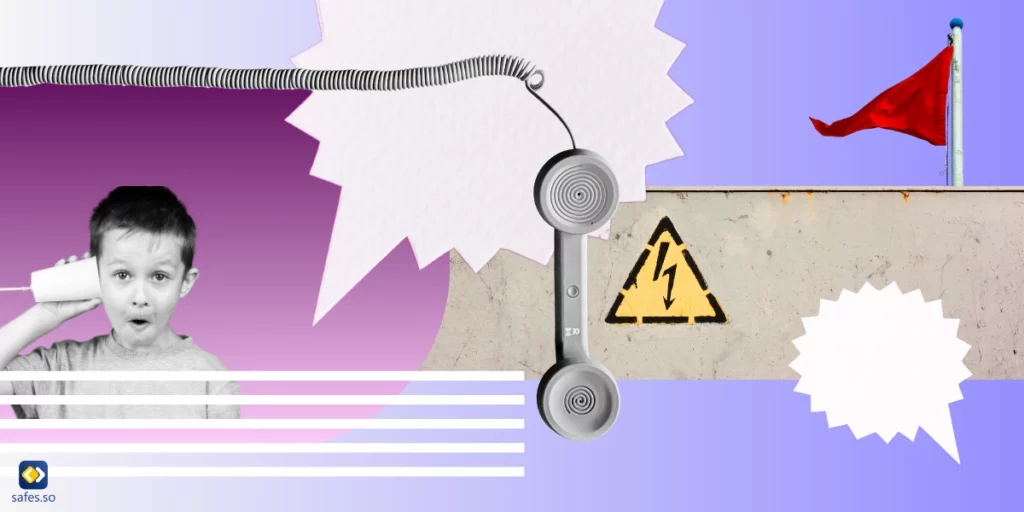It’s critical to understand anti-social behavior in children since it can escalate to more serious problems if not addressed before the age of nine or the third grade. Attention issues and aggressive behavior are early indicators of antisocial behavior. Antisocial conduct can be seen in children as young as three or four years old. The presence of antisocial (i.e., angry, violent, or disobedient) behavior and the absence of prosocial (i.e., communicative, affirming, or cooperative) behavior are the two components of antisocial behavior in children. Deception, aloofness, resistance, violence, and aggression are the most common indications of antisocial conduct in young children. These examples could include animal cruelty, stealing, disobeying the rules, and vandalism. In this blog, we’ll guide you through the types of anti-social behavior and link them to social media.
Download and Start Your Free Trial of the Safes Parental Control App
Understanding Anti-Social Behavior
Antisocial behaviors (also known as dissocial behaviors) are actions that are regarded to violate the rights of others by committing crimes, such as stealing and physical assault, as well as noncriminal behaviors such as lying and manipulation. It’s regarded as disruptive to others in society. Antisocial behavior is described as “behavior by a person that causes, or is likely to cause, harassment, alarm, or distress to persons who are not members of the person’s household.” When a person engages in personal antisocial behavior, he or she targets a specific individual or group. When a person engages in a nuisance of antisocial behavior, he or she causes difficulties, annoyance, or pain to the community. When a person’s behaviors impact the larger environment, such as public areas or buildings, this is referred to as environmental anti-social behavior.
School and neighborhood environment, heredity and family history, poor and bad parenting methods, aggressive, unstable, or stormy home life, hyperactivity, and neurological issues are all risk factors for antisocial conduct in youngsters. Parental factors such as harsh and inconsistent parenting style and parental mental health problems, as well as environmental factors such as poverty, may be associated with a higher risk of developing conduct disorders. Certain factors appear to increase the risk of developing an antisocial personality disorder, such as a childhood conduct disorder diagnosis, a family history of antisocial personality disorder or other personality disorders or mental health conditions, childhood abuse or neglect, and unstable or violent family life.

The Impact of Social Media on Anti-Social Behavior Targeted at Parents
There is evidence that certain teenagers’ usage of social media is associated with lower life satisfaction. Because of cognitive, hormonal, and social changes during adolescent growth, adolescents may be sensitive to social media at specific times. Social media use has also been linked to childhood depression. Although media violence influences aggressive and antisocial conduct, there is also evidence that a general amount of media consumption, regardless of its violent nature, affects antisocial behavior.
Social media can have an impact on how youngsters think and behave. Children can express themselves through social media as they interact with others. Social media platforms provide several daily opportunities to connect with friends and people who share common interests. There are several advantages to using social media. It can help your children feel connected and establish friendships. On the other hand, it can have detrimental impacts on children, such as sensory overload and more significant cognitive difficulties.
Here are some ways parents can help their children avoid the bad effects of social media:
- Install a parental control app like Safes that will notify you if something suspicious occurs but will not intrude on your teen’s privacy. Safes also offers parents the option to block inappropriate apps and websites or set specific times for them to use their devices. You can download it for iOS, Android, Windows, and macOS. It also offers a free trial so you can start using it today with ease.
- Talk to your child about their online conduct and what is and is not suitable for them to view, do, publish, and say.
- Teach your child or teen that the internet is everlasting.
- Join your child’s social network so you may check their posts when necessary, but don’t use it to spy.
Parent-child communication, as well as screen time limits, can help children escape the hazards of social media. Parents should be mindful of what their children are doing online and with whom they are communicating. Parents should report any sort of abuse and block the user from their or their child’s account. Condemn this behavior at all times and, if necessary, report it to the police. Harassment and abuse on the internet can have tragic effects.
Types of Anti-Social Behaviors in Children
Antisocial behavior refers to actions that violate social norms and disrupt the well-being of others. Some examples of antisocial behavior examples are lying, stealing, or skipping school. In general, these behaviors can be divided into four categories:
- Overt Anti-Social Behavior: This refers to behaviors that are easily visible and get attention. Examples include fighting, shouting, throwing tantrums, abusing substances, or hitting someone. Children who display overt anti-social behavior might not have learned appropriate social skills or coping mechanisms to manage their emotions.
- Covert Anti-Social Behavior: This involves behaviors that are hidden or less visible, and it’s harder to detect. Children who exhibit covert anti-social behavior might lie, skip school, cheat, manipulate, or engage in secretive activities without the knowledge of others. They might lack empathy and moral reasoning and need guidance to develop empathy. The said examples of antisocial behavior can be seen in early childhood.
- Relational Aggression: Relational aggression is a type of behavior that is characterized by damaging or manipulating relationships with others. It involves spreading rumors, excluding others, or using social media to harass or bully. This type of behavior can lead to severe emotional and psychological distress for the victim.
- Property Damage: Children might also show anti-social behavior by damaging or vandalizing property. This could include breaking things, graffiti, or stealing things. Property damage can be a sign of frustration or anger and could be an outlet for children who don’t know how to deal with their emotions.

Strategies for Addressing Anti-Social Behavior in Children
To help prevent and address anti-social behavior, it’s essential to implement effective prevention and early intervention strategies, disciplinary techniques, and consistent and positive parenting. In severe cases, seeking professional help and support can be necessary.
Prevention and Early Intervention Strategies
Prevention is always better than cure. To help prevent anti-social behavior, early intervention is key. Timely identification of behavioral issues and providing early intervention can significantly reduce the risk of such behavior becoming ingrained in a person’s personality.
Some effective prevention and early intervention strategies may include the following:
- Encouraging positive peer relationships
- Promoting social skills development
- Teaching effective communication and problem-solving skills
- Providing access to resources and support services
Effective Disciplinary Techniques
When a child or an individual displays anti-social behavior, it’s important to implement effective disciplinary techniques. However, it’s equally crucial to ensure these techniques are non-violent and age-appropriate. It’s important to note that discipline should always be based on clear and consistent communication and should never be abusive or harsh.
Importance of Consistent and Positive Parenting
Consistent and positive parenting can play a vital role in preventing anti-social behavior. A supportive and nurturing environment can help build trust and promote healthy relationships between parents and children.
Seeking Professional Help and Support
In some situations, anti-social behavior may require the assistance of a professional. Seeking the help of a trained counselor, therapist, or psychologist can help individuals understand their behavior and learn healthy coping skills.
It’s important to seek professional help when:
- The behavior is severe and persistent
- The behavior is causing harm to self or others
- The behavior is affecting daily functioning and relationships
Conclusion
Children experience a range of emotions and behaviors as they grow up, and some of these behaviors can be deemed as anti-social. Anti-social behavior is any conduct that goes against the social norms and expectations of society. It might include a variety of behaviors that are harmful to others, such as bullying, cheating, lying, stealing, or being disobedient.
Anti-social behavior in children can be expressed overtly or covertly and can cause harm to others or their surroundings. Relational aggression and property damage are some of the covert ways children can display anti-social behaviors. Socialization skills, empathy, and moral reasoning are crucial for preventing anti-social behavior in children.
Addressing anti-social behavior in children is crucial as it can affect the child’s mental well-being and relationships in the future. Children need to learn appropriate social skills, empathy, values, and moral reasoning. Parents or guardians must work with children by setting clear boundaries, communicating expectations, and helping develop social skills. It’s essential to understand that anti-social behavior is a learned behavior that can be unlearned. Early intervention is crucial to preventing it from becoming a pattern in a child’s behavior. Redirecting negative actions into positive actions might be a helpful approach to handling these types of behaviors.
Your Child’s Online Safety Starts Here
Every parent today needs a solution to manage screen time and keep their child safe online.
Without the right tools, digital risks and excessive screen time can impact children's well-being. Safes helps parents set healthy boundaries, monitor activity, and protect kids from online dangers—all with an easy-to-use app.
Take control of your child’s digital world. Learn more about Safes or download the app to start your free trial today!




